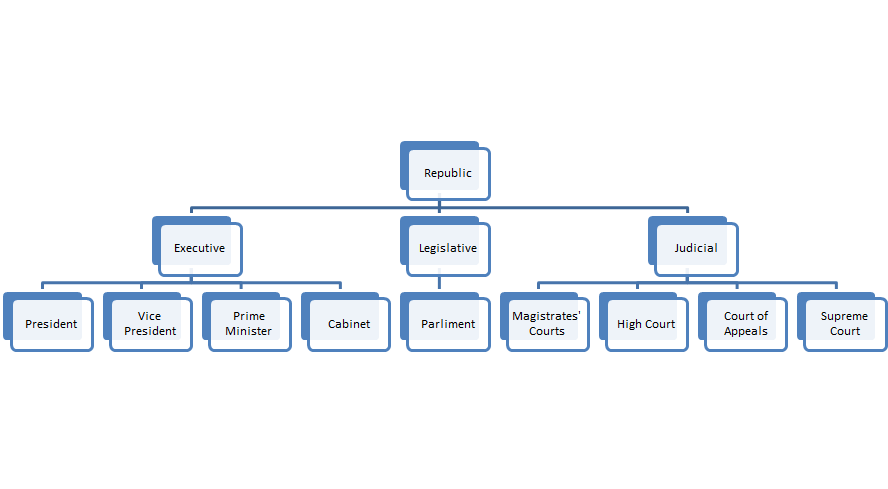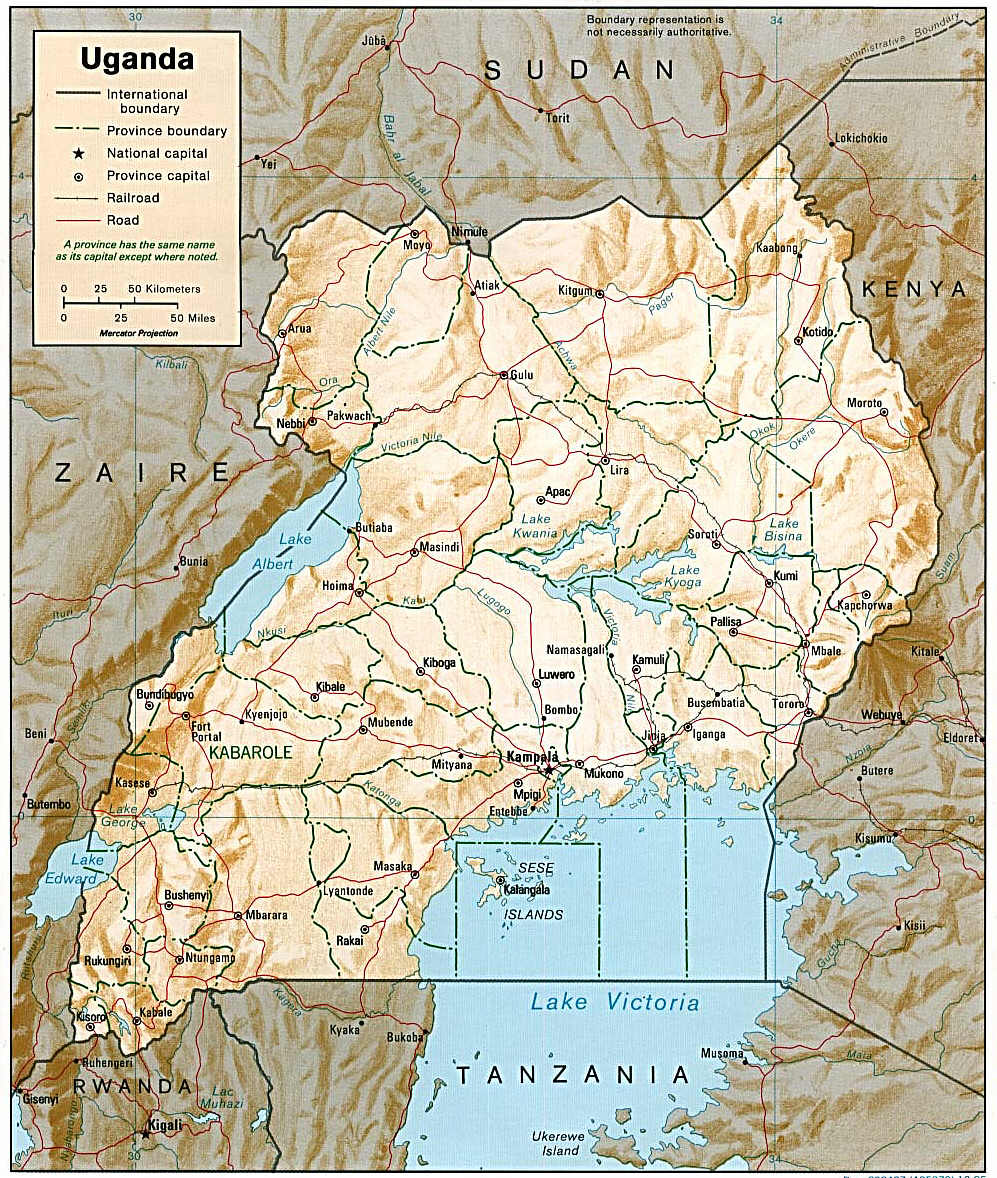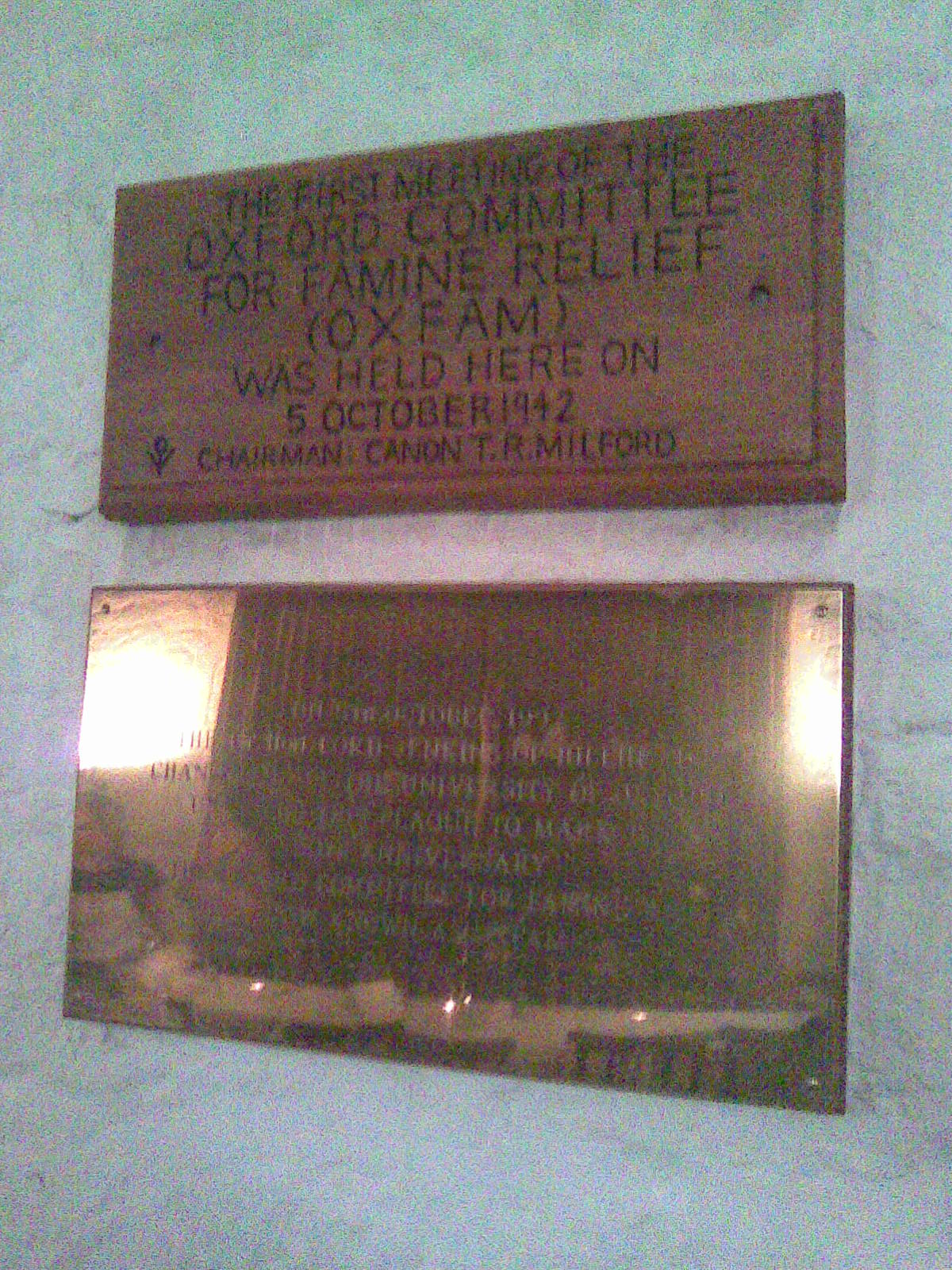|
Winnie Byanyima
Winifred Byanyima (born 13 January 1959), is a Ugandan aeronautical engineer, politician, human rights activist, feminist and diplomat. She is the executive director of UNAIDS, effective November 2019. From May 2013 until November 2019, she served as the executive director of Oxfam International. She has served as the director of the Gender Team in the Bureau for Development Policy at the United Nations Development Programme (UNDP) from 2006. Background Byanyima was born in Mbarara District in the Western Region of Uganda, a British protectorate at the time. Her parents are the late Boniface Byanyima, one-time national chairman of the Democratic Party in Uganda, and the late Gertrude Byanyima, a former schoolteacher who died in November 2008. Winnie Byanyima attended Mount Saint Mary's College Namagunga in Mukono District. She went on to obtain a bachelor's degree in aeronautical engineering from the University of Manchester, becoming the first female Ugandan to be ... [...More Info...] [...Related Items...] OR: [Wikipedia] [Google] [Baidu] |
Mbarara
Mbarara City is a city in the Western Region of Uganda and the second largest city in Uganda after Kampala. The city is divided into 6 boroughs of Kakoba Division, Kamukuzi Division, Nyamitanga Division, Biharwe Division, Kakiika Division, Nyakayojo Division. It is the main commercial centre of most of south western districts of Uganda and the site of the district headquarters. In May 2019, the Uganda's cabinet granted Mbarara a city status, which started on 1 July 2020. Location Mbarara is an important transport hub, lying west of Masaka on the road to Kabale, near Lake Mburo National Park. This is about , by road, southwest of Kampala, Uganda's capital and oldest city. The coordinates of the Mbarara central business district are 00 36 48S, 30 39 30E (Latitude:-0.6132; Longitude:30.6582). The city lies at an average elevation at about above sea level. City Wards The city has a total of 23 wards spread across 6 divisions and 2 constituencies Population In 2002, the nation ... [...More Info...] [...Related Items...] OR: [Wikipedia] [Google] [Baidu] |
Uganda Protectorate
The Protectorate of Uganda was a protectorate of the British Empire from 1894 to 1962. In 1893 the Imperial British East Africa Company transferred its administration rights of territory consisting mainly of the Kingdom of Buganda to the British government. In 1894 the Uganda Protectorate was established, and the territory was extended beyond the borders of Buganda to an area that roughly corresponds to that of present-day Uganda. Background In the mid-1880s, the Kingdom of Uganda was divided between four religious factions - Adherents of Uganda's Native Religion, Catholics, Protestants and Muslims - each vying for political control.Griffiths, Tudor. “Bishop Alfred Tucker and the Establishment of a British Protectorate in Uganda 1890-94.” Journal of Religion in Africa, vol. 31, no. 1, 2001, pp. 92–114. JSTOR, www.jstor.org/stable/1581815. In 1888, Mwanga II was ousted in a coup led by the Muslim faction, who installed Kalema as leader. The following year, a Protestan ... [...More Info...] [...Related Items...] OR: [Wikipedia] [Google] [Baidu] |
Constitution Of Uganda
The Constitution of Uganda is the supreme law of Uganda. The fourth and current constitution was promulgated on 8 October 1995. It sanctions a republican form of government with a powerful President. First constitution (1962–1966) The first constitution of Uganda was the product of the Ugandan Constitutional Conference and took effect at the moment of independence (9 October 1962). It provided for a system of Parliamentary democracy underpinned by constitutional supremacy. It provided for a complex system of devolution within Uganda: the Kingdom of Buganda gained particularly strong powers of self-government; the Kingdoms of Bunyoro, Acoli, Tooro and Ankole, and the Territory of Busoga also gained the status of "federal states" and were permitted to retain their own legislatures; while the remaining districts and the territory of Mbale were controlled directly by the central government. The 1962 constitution provided for most members of Parliament to be elected directly. The s ... [...More Info...] [...Related Items...] OR: [Wikipedia] [Google] [Baidu] |
Constituent Assembly
A constituent assembly (also known as a constitutional convention, constitutional congress, or constitutional assembly) is a body assembled for the purpose of drafting or revising a constitution. Members of a constituent assembly may be elected by popular vote, drawn by sortition, appointed, or some combination of these methods. Assemblies are typically considered distinct from a regular legislature, although members of the legislature may compose a significant number or all of its members. As the fundamental document constituting a state, a constitution cannot normally be modified or amended by the state's normal legislative procedures in some jurisdictions; instead a constitutional convention or a constituent assembly, the rules for which are normally laid down in the constitution, must be set up. A constituent assembly is usually set up for its specific purpose, which it carries out in a relatively short time, after which the assembly is dissolved. A constituent assembly is ... [...More Info...] [...Related Items...] OR: [Wikipedia] [Google] [Baidu] |
Ugandan Politics
Uganda is a presidential republic in which the President of Uganda is the head of state and the prime minister is the head of government business. There is a multi-party system. Executive power is exercised by the government. Legislative power is given to both the government and the National Assembly. The system is based on a democratic parliamentary system with equal rights for all citizens over 18 years of age. Political culture In a measure ostensibly designed to reduce sectarian violence, political parties were restricted in their activities from 1986. In the non-party "Movement" system instituted by President Yoweri Museveni, political parties continued to exist but could not campaign in elections or field candidates directly (although electoral candidates could belong to political parties). A constitutional referendum canceled this 19-year ban on multi-party politics in July 2005. Presidential elections were held in February 2006. Museveni ran against several candidates ... [...More Info...] [...Related Items...] OR: [Wikipedia] [Google] [Baidu] |
National Resistance Army
The National Resistance Army (NRA), the military wing of the National Resistance Movement (NRM), was a rebel army that waged a guerrilla war, commonly referred to as the Ugandan Bush War or Luwero War, against the government of Milton Obote, and later that of Tito Okello. NRA was supported by Muammar Gaddafi. NRA was formed in 1981 when Yoweri Museveni's Popular Resistance Army (PRA) merged with ex-president Yusuf Lule's group, the Uganda Freedom Fighters (UFF). Museveni, then leader of the Uganda Patriotic Movement party, alleged electoral fraud and declared an armed rebellion, following the victory of Uganda Peoples Congress in the bitterly disputed 1980 general election."A Country Study: The Second Obote Regime: 1981–85" '' |
Ugandan Bush War
The Ugandan Bush War, also known as the Luwero War, the Ugandan Civil War or the Resistance War, was a civil war fought in Uganda by the official Ugandan government and its armed wing, the Uganda National Liberation Army (UNLA), against a number of rebel groups, most importantly the National Resistance Army (NRA), from 1980 to 1986. The unpopular President Milton Obote was overthrown in a coup d'état in 1971 by General Idi Amin, who established a military dictatorship. Amin was overthrown in 1979 following the Uganda-Tanzania War, but his loyalists started the Bush War by launching an insurgency in the West Nile region in 1980. Subsequent elections saw Obote return to power in a UNLA-ruled government. Several opposition groups claimed the elections were rigged, and united as the NRA under the leadership of Yoweri Museveni to start an armed uprising against Obote's government on 6 February 1981. Obote was overthrown and replaced as president by his general Tito Okello in 19 ... [...More Info...] [...Related Items...] OR: [Wikipedia] [Google] [Baidu] |
Yoweri Museveni
Yoweri Kaguta Museveni Tibuhaburwa (born 15 September 1944) is a Ugandan politician and retired senior military officer who has been the 9th and current President of Uganda since 26 January 1986. Museveni spearheaded rebellions with aid of then current military general Tito Okello and general Bale Travor that toppled Ugandan presidents Milton Obote and Idi Amin before he captured power in 1986. In the mid-to-late 1990s, Museveni was celebrated by the Western world as part of a new generation of African leaders. Museveni's presidency has been marred by involvement in the First Congo War, the Rwandan Civil War, and other African Great Lakes conflicts; the Lord's Resistance Army insurgency in Northern Uganda, which caused a humanitarian emergency; and constitutional amendments, scrapping presidential term limits in 2005, and the presidential age limit in 2017. Museveni's rule has been described by scholars as competitive authoritarianism, or illiberal democracy. Press has been un ... [...More Info...] [...Related Items...] OR: [Wikipedia] [Google] [Baidu] |
Uganda Airlines (1976–2001)
Uganda Airlines was the flag carrier of Uganda. The airline was established in , and started operations in 1977. It was headquartered in Entebbe, Wakiso District, Uganda, and operated from its hub in Entebbe International Airport. Attempts were made by the Government of Uganda to privatise the company, but all potential bidders pulled out, eventually leading to the liquidation of Uganda Airlines Corporation in . The airline was later revived and began flying again in 2019 under the same name, Uganda Airlines. History Uganda Airlines was founded as a subsidiary of the government-owned Uganda Development Corporation (UDC) in as a replacement of the services previously operated by East African Airways. It commenced operations in 1977, when ''Uganda Aviation Services (UAS)'', set up by British United Airways in 1965 but then a UDC subsidiary, was absorbed by Uganda Airlines, taking over the UAS route network. Following delivery of the first Boeing 707-320C in the late 1970s, ne ... [...More Info...] [...Related Items...] OR: [Wikipedia] [Google] [Baidu] |
Flight Engineer
A flight engineer (FE), also sometimes called an air engineer, is the member of an aircraft's flight crew who monitors and operates its complex aircraft systems. In the early era of aviation, the position was sometimes referred to as the "air mechanic". Flight engineers can still be found on some larger fixed-wing airplanes and helicopters. A similar crew position exists on some spacecraft. In most modern aircraft, their complex systems are both monitored and adjusted by electronic microprocessors and computers, resulting in the elimination of the flight engineer's position. In earlier days, most larger aircraft were designed and built with a flight engineer's position. For U.S. civilian aircraft that require a flight engineer as part of the crew, the FE must possess an FAA Flight Engineer Certificate with reciprocating, turboprop, or turbojet ratings appropriate to the aircraft. Whereas the four-engine Douglas DC-4 did not require an FE, the FAA type certificates of subseque ... [...More Info...] [...Related Items...] OR: [Wikipedia] [Google] [Baidu] |
Oxford Committee For Famine Relief
Oxfam is a British-founded confederation of 21 independent charitable organizations focusing on the alleviation of global poverty, founded in 1942 and led by Oxfam International. History Founded at 17 Broad Street, Oxford, as the Oxford Committee for Famine Relief by a group of Quakers, social activists, and Oxford academics in 1942 and registered in accordance with UK law in 1943, the original committee was a group of concerned citizens, including Henry Gillett (a prominent local Quaker), Theodore Richard Milford, Gilbert Murray and his wife Mary, Cecil Jackson-Cole, and Alan Pim. The committee met in the Old Library of University Church of St Mary the Virgin, Oxford, for the first time in 1942, and its aim was to help starving citizens of occupied Greece, a famine caused by the Axis occupation of Greece and Allied naval blockades and to persuade the British government to allow food relief through the blockade. The Oxford committee was one of several local committees fo ... [...More Info...] [...Related Items...] OR: [Wikipedia] [Google] [Baidu] |
Mukono District
Mukono is one of the districts in the Central Region of Uganda. The town of Mukono is home to the district's main commercial center and district headquarters. Location Mukono District is bordered by Kayunga District to the north, Jinja District to the east, Kalangala District to the south-west, Kira Town and Wakiso District to the west, and Luweero District to the north-west. The town of Mukono is about by road, east of Kampala, the capital and largest city of Uganda. This is about west of the town of Njeru, where the Nalubaale Power Station is situated, on the Kampala–Jinja Highway. The geographical coordinates of Mukono District are 00°28'50.0"N, 32°46'14.0"E (Latitude:0.480567; Longitude:32.770567). Demographics The 1991 national population census estimated the district's population at 319,400. According to the 2002 national census, the population was about 423,100, of whom 49.8 percent were males and 50.2 percent were females. At that time, its population growt ... [...More Info...] [...Related Items...] OR: [Wikipedia] [Google] [Baidu] |







